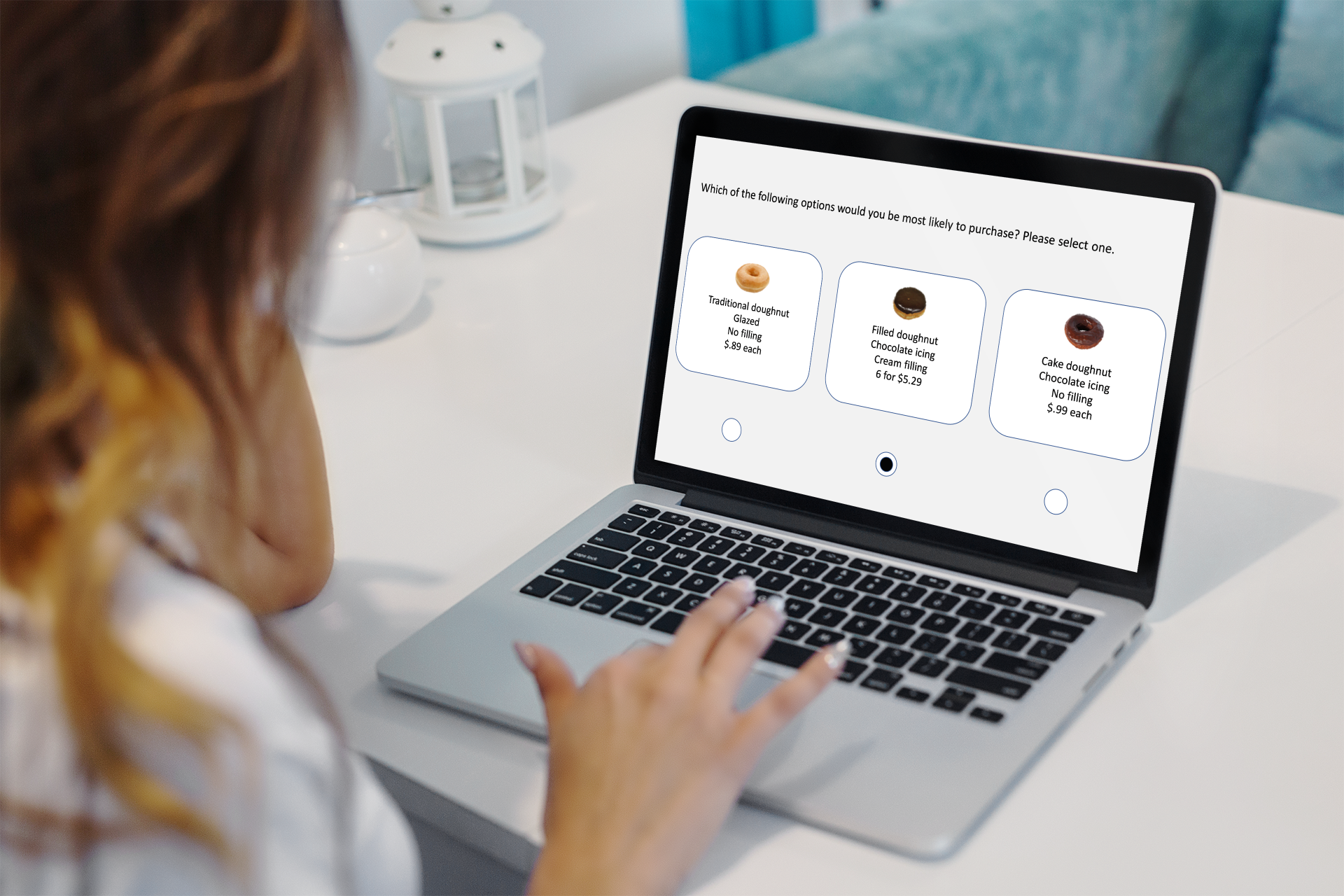W5 on Conjoint - Part 1: Conjoint 101
Conjoint research informs superior products, impactful branding, and sound pricing strategies by quantifying individual product attributes to generate a reliable understanding of consumer preferences.
Conjoint is an under-estimated, under-utilized, (and perhaps under-explained) market research survey technique. The term conjoint refers to the combination or linking of factors involved in something. In market research, conjoint describes an engaging and dynamic “trade-off” exercise integrated within the flow of a survey where a variety of product or service options are presented for consumer feedback.
Conjoint strives to mirror the real-world choices consumers consider when making a purchase – linking and presenting numerous factors and alternatives and allowing respondents to represent how they would think and act in the purchasing scenario.
That sounds interesting. But how does it work?
In conjoint surveys, W5 poses multiple combinations of options over several survey screens, yielding a clear prioritization of factors. (Hence why conjoint analysis is often referred to as “choice modelling.”) This allows consumers to assess the value of specific features or “attributes” of a given product.
Let’s consider how this would work if you were a bakery selling doughnuts and wanted to optimize the assortment to generate sales. In this situation, the attributes of a doughnut that could be assessed in conjoint include options for ingredients (dough or cake), filling types, coating/icing flavors, toppings, price (per doughnut vs. a dozen), etc.
Remember, the ultimate goal of conjoint analysis is to quantify each attribute (and the assorted options/alternatives for those attributes, referred to as “levels”) to assist in the development of better products and a sound strategy. In our example, the levels for a doughnut filling might be white cream, chocolate cream, raspberry jelly, strawberry jelly, etc.
In addition to asking consumers how they would rate the importance of factors (individually) on a 5-point scale (i.e., at another point in the survey), a conjoint exercise presents various market-realistic combinations of attributes, asking which combinations consumers would consider.
Conjoint mimics the purchasing experience, asking respondents to evaluate products (both actual and hypothetical) based on the combined product options. Respondents reveal their preferences by choosing their preferred or most-likely-chosen product over multiple survey screens featuring differing combinations of options.
I love doughnuts, but how else can Conjoint be leveraged?
Conjoint probes into category behaviors and attitudes more directly adding a unique and valuable perspective into consumers’ collective preferences and the “market mindset.”
Conjoint empowers W5 to extrapolate the attributes that drive consumer demand and consumers’ prioritization of levels, generating insights and strategic direction that can be leveraged to:
· Optimize Product (or Service) Configuration
· Determine the Best Pricing Strategy
· Inform a Branding or Communications Strategy
Conjoint at a glance:
This is fascinating. How can I learn more?
Check out Part 2 where we’ll focused on how to organize products and options for the research and unpack how W5 conducts Conjoint!
W5 on Conjoint is a three-part article exclusively available on our blog, The W5 Narrative.


